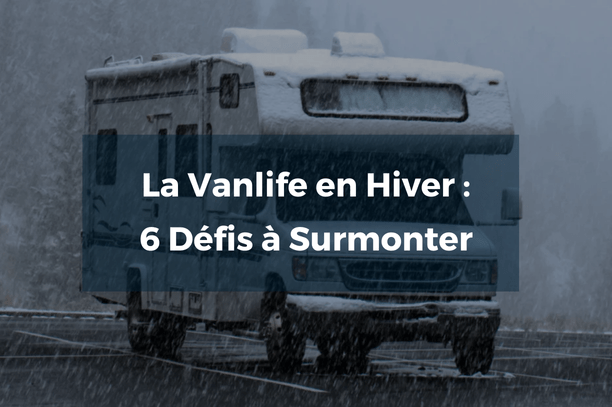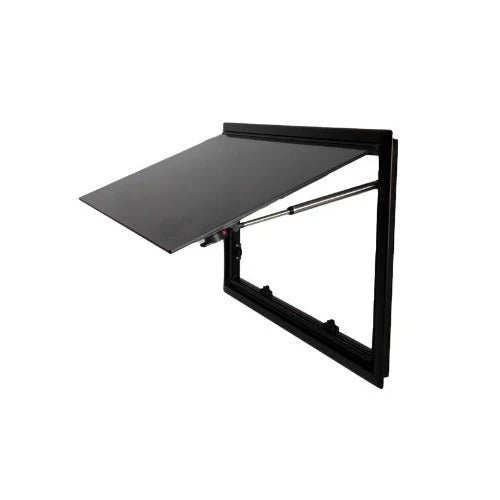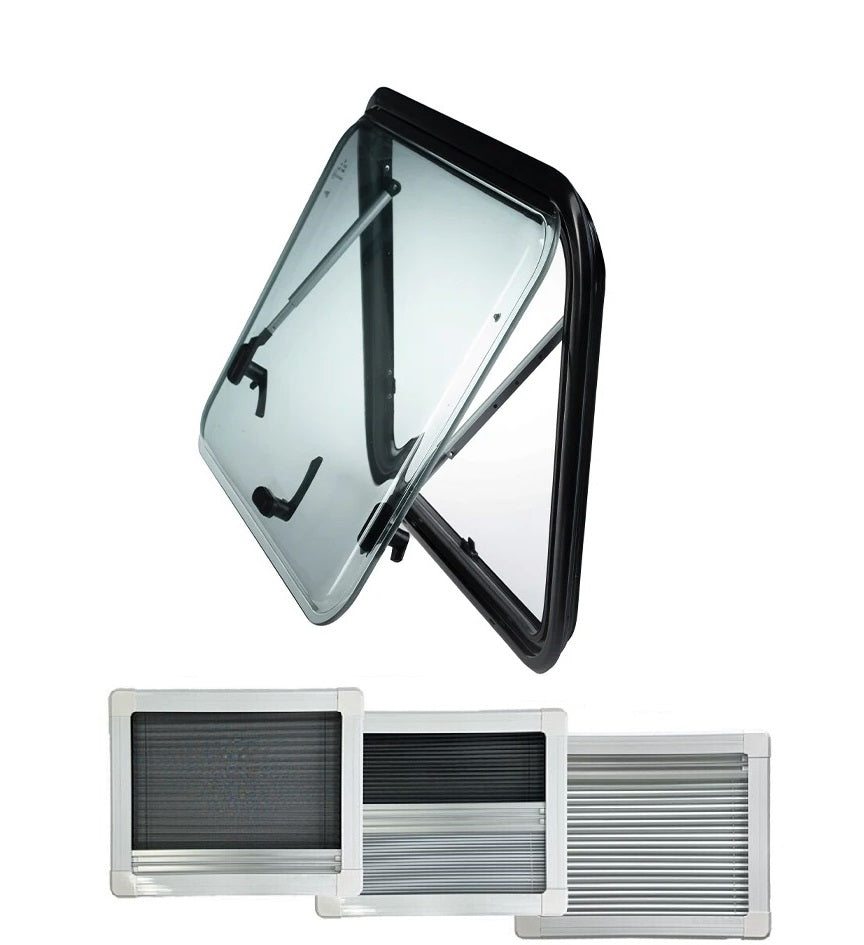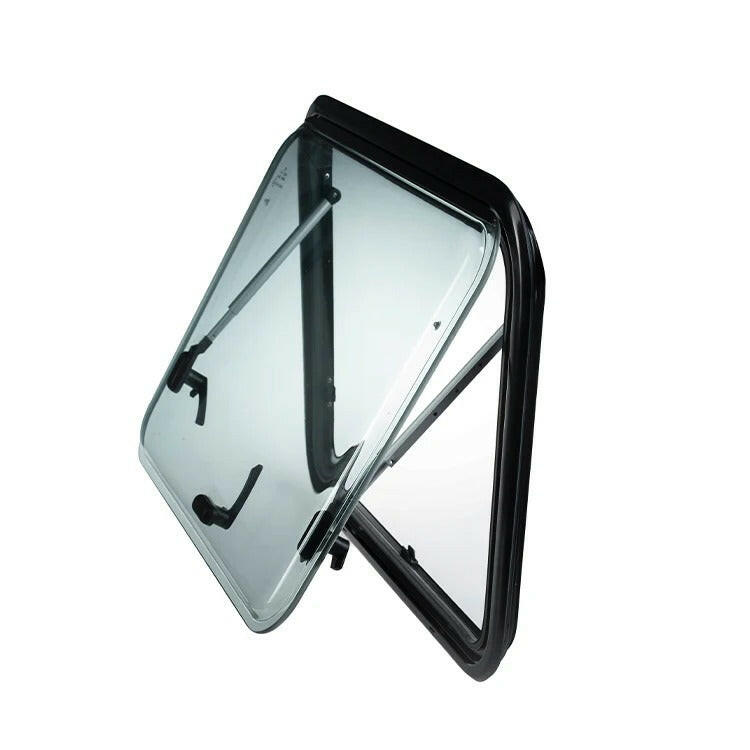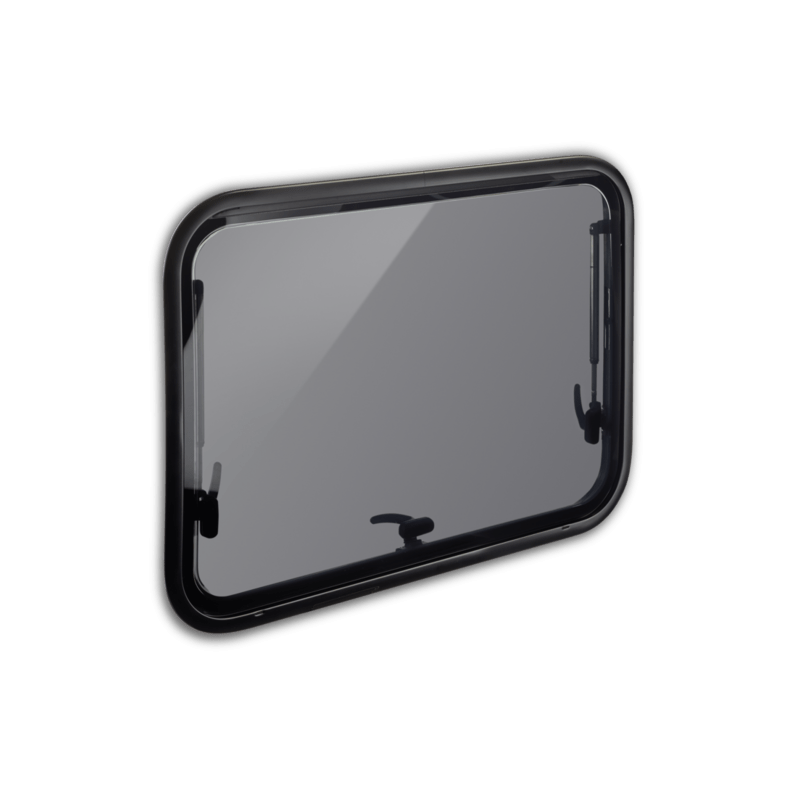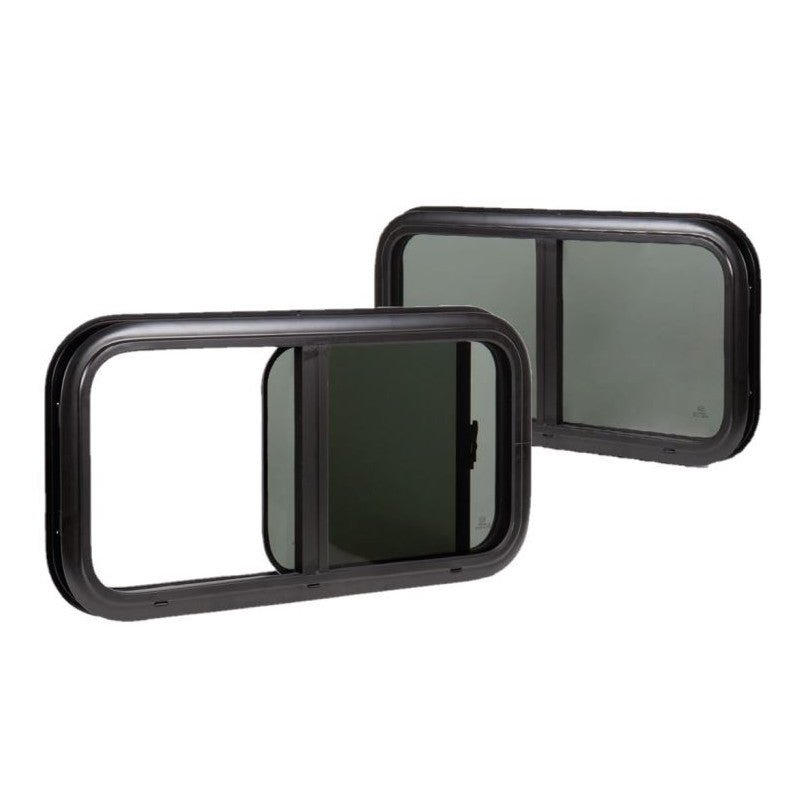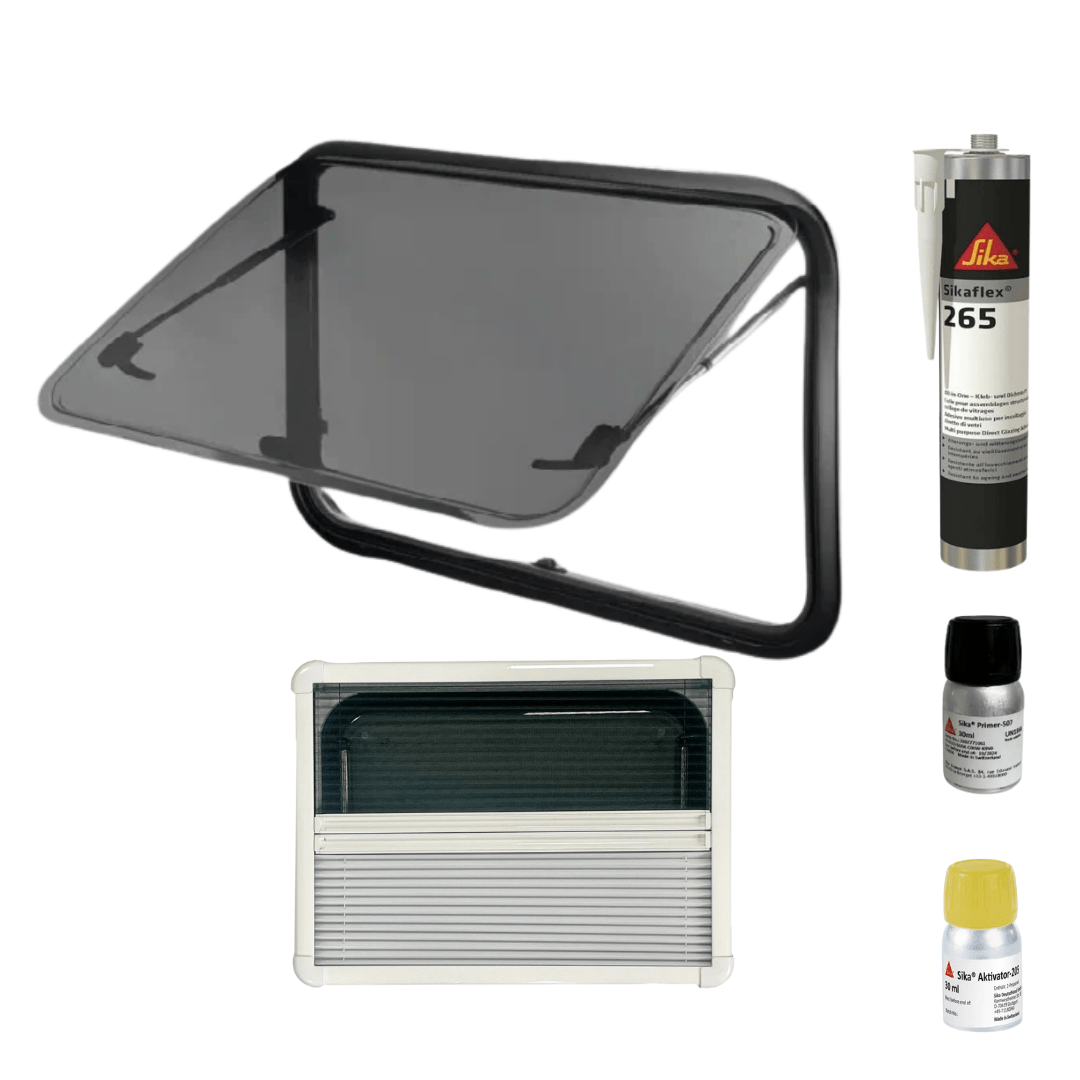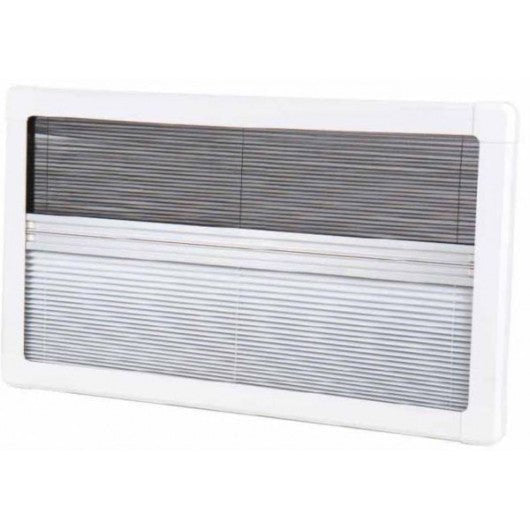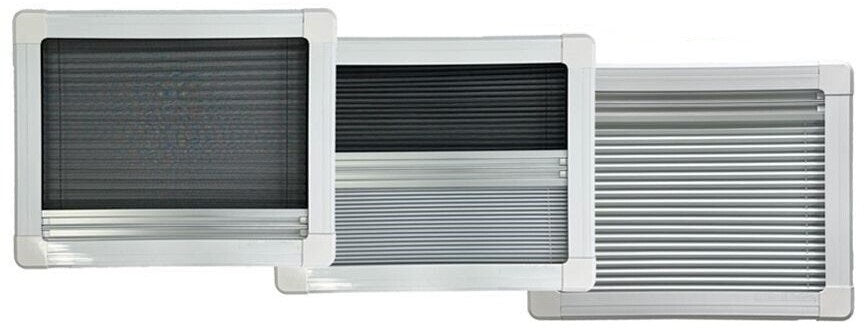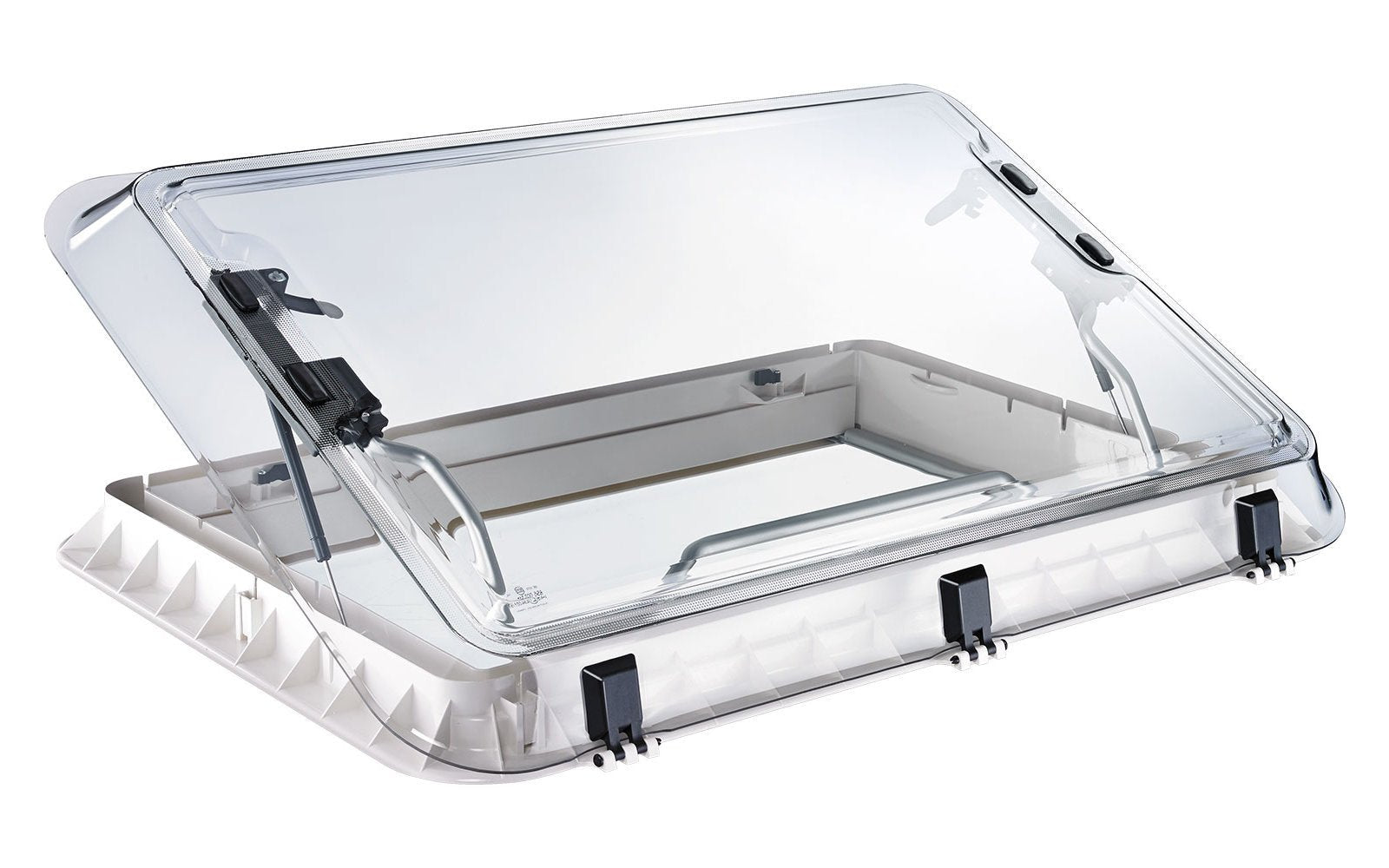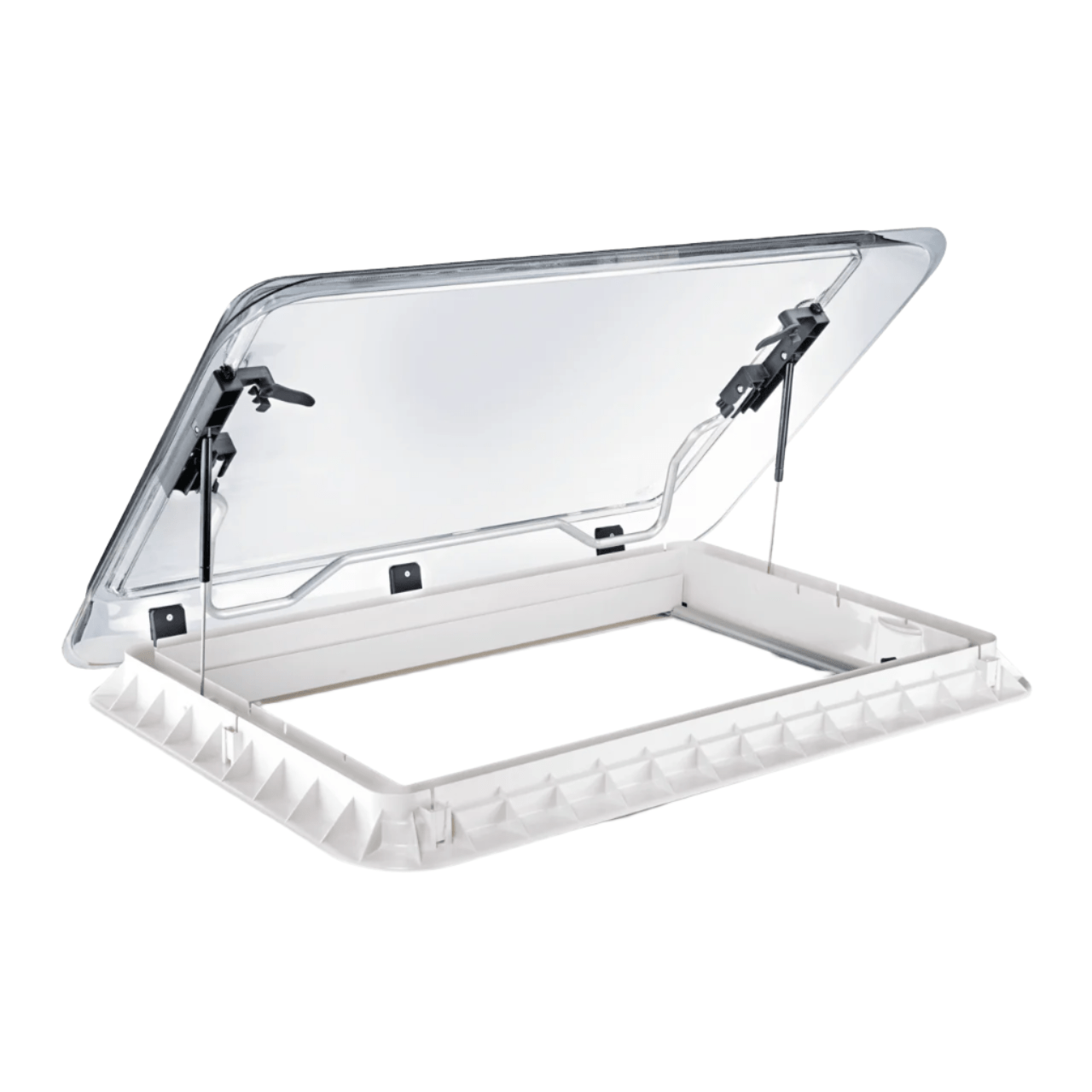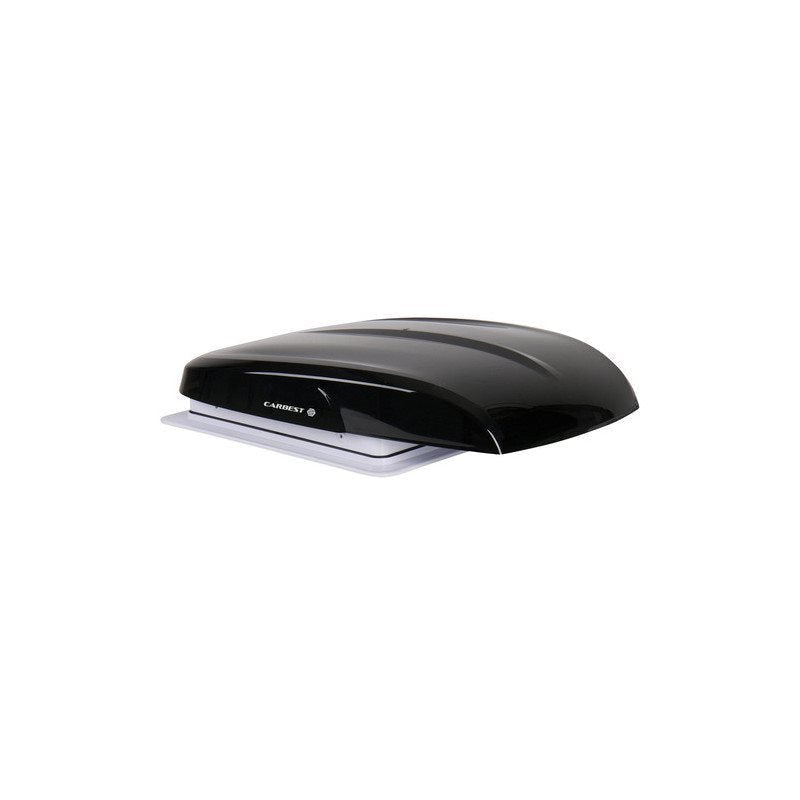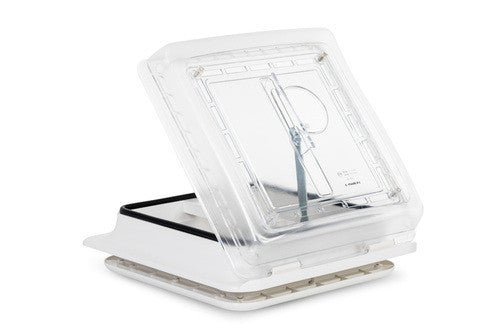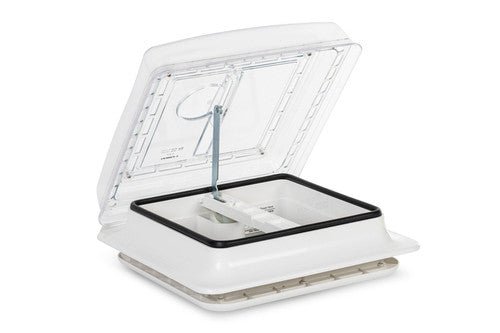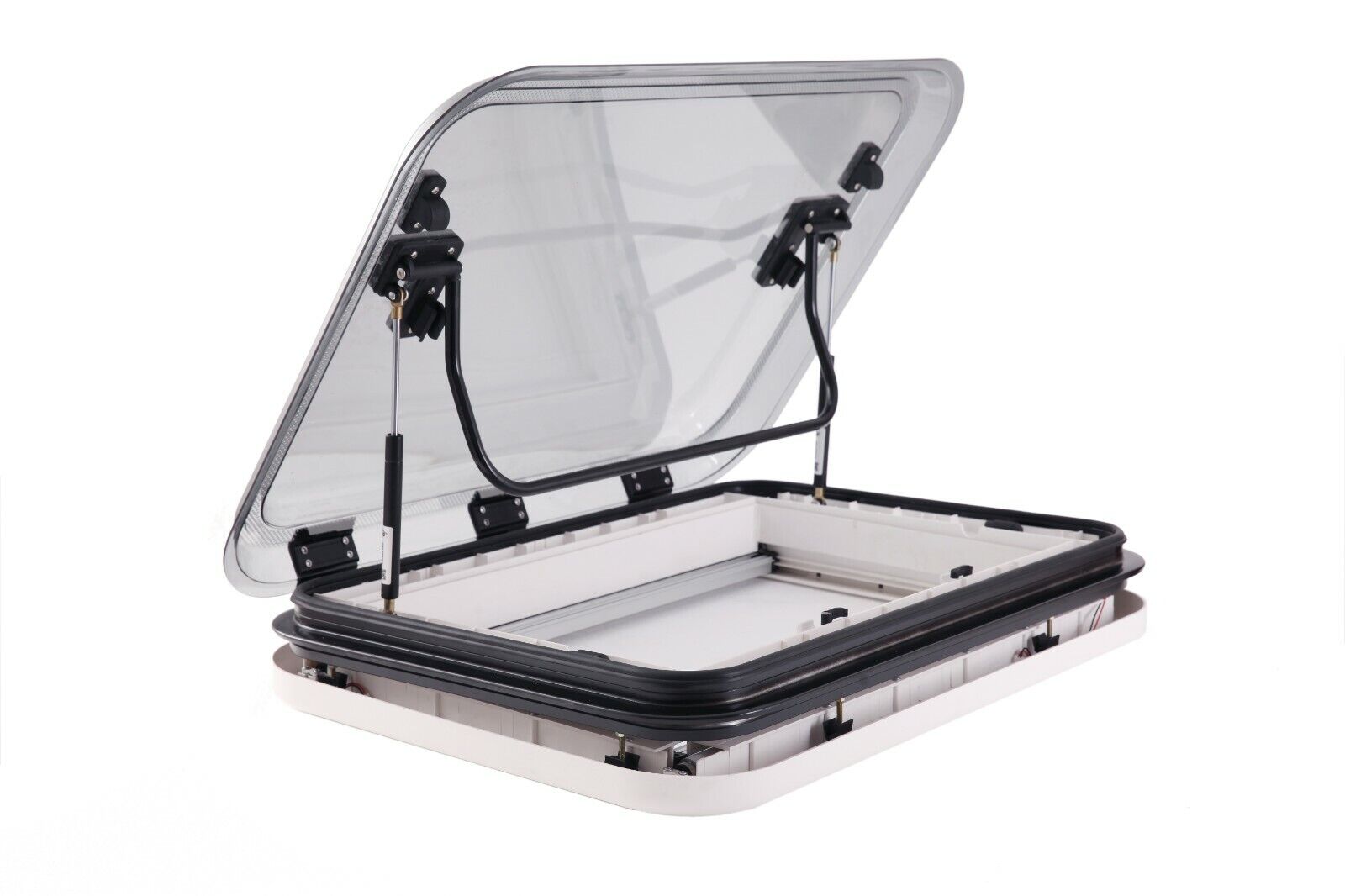Living full-time in a van in winter: a challenge, but an incredible experience! ❄️🚐
Living in a van during winter is much harder than during summer. Nothing is simple: finding water and camping spots, staying warm and dry, the days are short, and a lot of time is spent inside the van... It's not a glamorous life, but it is extremely rewarding if, like us, you are looking for the best skiing or snowboarding conditions. 🎿🏔️
Here are the challenges we faced and how we overcame them. Do you love cold and snow as much as we do? ❄️👇
Our Vanlife conversion experts are here for you! Whether you have a question about our products or are looking for advice to transform your van into a true nomadic cocoon, contact us – we will be happy to guide you!
1- Traction and driving on snow
1.1- Traction Control System (TCS)
The Traction Control System (TCS) of the Ford Transit is a safety system that prevents loss of control during acceleration by limiting power to the rear wheels when slipping is detected. In short, it prevents uncontrolled skidding. However, its role is not to improve traction but to protect you.
When to temporarily disable the TCS to increase traction:
- Before getting stuck.

- After being stuck.

- When climbing a slippery slope at low speed.

To disable/enable the TCS, press the TCS ON/OFF button for 2-3 seconds.

Reminder: do not disable the TCS for highway driving, even in winter conditions.
1.2- Limited Slip Differential (LSD)
The Limited Slip Differential (LSD) of the Ford Transit increases traction. If one drive wheel slips, power is transferred to the other wheel simultaneously. Unlike the TCS, the LSD is a mechanical device (clutch) on the differential and cannot be disabled (which is perfect).
It is an option we strongly recommend because it makes a huge difference! On a Transit without LSD, all power is transmitted to only one wheel at a time.
1.3- 4x4
Is a 4x4 necessary for living in a van in winter?
Not necessary, but useful!
We spent two winters chasing snow in remote places in France and the European Alps. From the Pyrenees to the Hautes-Alpes through Savoie and the Vosges, we drove on all types of winter roads: ice, packed snow, powder... Despite these conditions, we only used chains once, and the Maxtrax recovery boards were never used.
But it’s a real plus!
If the price doesn't bother you, go for it! It avoids complicated situations and saves you time.
1.4- Rear-Wheel Drive (RWD) vs Front-Wheel Drive (FWD)
The choice between FWD (front-wheel drive) and RWD (rear-wheel drive) depends on the van's weight. For converted vans, where the weight is often at the rear, RWD offers more traction. We strongly prefer RWD, especially for climbing slopes with weight concentrated on the rear axle.
That said, don't overdo it by adding too much weight at the rear, or you risk experiencing "steer drifting" (meaning the front wheels won't have enough traction to turn left or right)...
1.5- Winter Tires
Are winter tires essential in winter? Yes, absolutely!
Don't be fooled by the "all-season" label on some tires: they are NOT designed for winter driving. In Quebec (Canada), they are simply illegal in winter. You need genuine winter tires: the difference in traction is striking, like night and day! And remember that traction is not only about moving forward but also about slowing down, taking turns, and having better reactions during emergency maneuvers.
While we consider 4x4 as an improvement (optional), we see winter tires as an essential safety element. If we had to choose between 4x4, a limited slip differential (LSD), chains, etc., we would first opt for winter tires.
EXCEPT if you come from a region where you rarely drive on snow (for example, to cross a high-altitude pass): in that case, snow chains (without winter tires) might suffice.
1.6- Snow Chains
Vans, although perfect for adventure, do not excel in traction on ice. Once you lose momentum on an icy slope or a frozen parking lot, it becomes almost impossible to get going again without proper equipment. That's where snow chains come in: a must-have for any well-prepared winter outing.

Why choose snow chains?
- Easy installation, even in difficult conditions Modern chains are designed to be easy to install, even in the middle of a snowstorm or blizzard. You don't need to move the vehicle to fit them, which is a huge advantage in tricky road conditions.
- Self-tightening system Thanks to their self-tightening mechanism, the chains automatically adjust while driving, offering optimal tension for maximum traction. No need to stop to readjust them; they work for you!
- Compact and easy to store Supplied in a compact hard case, they store easily in the trunk or under a seat, ready to be used when needed. No unnecessary clutter, which is crucial in a van where space is limited.
- Adaptability and safety Their diamond pattern design ensures excellent traction while minimizing noise and vibrations for a more comfortable and safe drive. Additionally, connection points are often color-coded, making installation intuitive even for novices.
A necessity on icy roads
Chains are not only useful for climbing icy or snowy slopes; they are also essential for situations where safety is at stake, such as during descents or on icy and winding roads.
Investing in quality snow chains guarantees a peaceful winter adventure, no matter the conditions. Don't let an icy road ruin your getaway: equip yourself and go with confidence!
1.7- Maxtrax
Maxtrax: The essential for difficult terrains 🚐❄️🏜️
Maxtrax are ultra-practical recovery boards to get out of deep snow, soft sand, or even a slippery ice patch.

Why Maxtrax?
- Effective in all situations: They slip under the wheels to provide immediate traction, whether on snow, sand, or mud. 🛞✨
- Lightweight & compact: Easy to carry and store, they don't take up space in your van. 👜
- Robust & durable: Made of reinforced nylon, they withstand extreme conditions, summer and winter alike. 🌡️🧊
- Quick use: No tools or complex maneuvers needed: place them and get going in seconds! ⏱️🚙
Bonus: They also serve as an anchor for a winch in places without trees or rocks. 🧗
Tip: With their stackable design and efficiency, they guarantee stress-free adventures, even in the worst conditions. 🌍💪
Maxtrax = peace of mind and freedom to explore, no matter the terrain! 🏞️🚐
1.8 - How to climb like a pro 🚐⛰️
Here is our method to overcome tricky off-road climbs:
If the attempt (and possible failure) is safe for you and others:
- Set the mood 🎵: Choose your favorite music and turn up the volume!
- Disable the TCS: This prevents the system from unnecessarily limiting power.
- Switch to manual mode: To prevent gear changes during the climb.
- Maintain stable RPM: Keep a constant engine speed throughout the climb.
- Loss of traction?: Don't release the accelerator! Keep going to allow the limited slip differential (LSD) to do its job. Momentum is crucial here!
- A bit of slipping?: No panic, as long as you keep control.
- Can't make it?: Time to bring out the snow chains... ❄️🛠️
With this method, you will maximize your chances of conquering any slope. 🚀

2- Staying warm
2.1- Heat source
We strongly recommend investing in a dry heat source like a Webasto/Autoterm 2d (diesel/gasoline) or a Propex (propane).
Advantages:
- No carbon monoxide inside the van (safety).
- No added moisture in the air (dry heat).
- High power (6500 BTU) for efficient heating.

If you travel in very cold temperatures (-26°C or lower), it is useful to have a Propex as an auxiliary or backup heater.

What size heater to choose?
Are the 2kW Webasto Air Top 2000 and Autoterm 2D heaters powerful enough? Here are our observations below. However, keep in mind that your results may vary depending on your van's insulation, window coverings, interior layout, etc. 😊
What performance to expect from the Webasto/Autoterm 2D depending on temperature? 🌡️❄️
👉 Above 3°C (37°F)
No need for a Webasto/Autoterm 2D in this case, it's a bit too powerful. ⚠️ If they run too often at idle, it can cause carbon deposits. An option like the Propex would be more suitable.
👉 Between 3°C and -18°C (37°F to 0°F)
This is where the Webasto Air Top 2000 or Autoterm 2D shine ✨: they are perfect for maintaining good heat in your van. 🚐🔥
👉 Between -18°C and -26°C (0°F to -15°F)
The Webasto/Autoterm does the job, but don't expect it to heat your van quickly. 🕒 If you're in a hurry, use the van's original heater for a little boost 🚀 or program the heater a few hours in advance.
👉 Below -26°C (-15°F)
At these extreme temperatures 🥶, the Webasto/Autoterm 2D maintains an interior temperature around 15°C (58°F) at best*. This is where a Propex can be useful as a complement for a boost or as a backup solution. 💪
Temperature measured early in the morning to eliminate the effect of the sun and residual heat from the day. 🌅
Preventing the van from freezing: essential mission 🚐❄️
NEVER LET THE INSIDE OF THE VAN FREEZE. Why? Because:
Plumbing pipes could burst 💦
Your walls could be decorated with burst liquids 🍷
Your food supplies and household products (like dish soap) would become unusable 🥫
Tips to protect your van from freezing:
No need to keep the heater running 24/7.
Diesel/gas heaters (like Webasto or Autoterm 2D) risk carbon deposits if used continuously. However, a gas Propex heater could handle this without problem. 👍
Program your heating cycles smartly.
The interior temperature takes time to reach freezing point. During the night or during your outings (skiing, hiking, etc.), turn off the heater for a few hours. ⏲️ Use the timer function of the Webasto Multicontrol HD to delay shutdown or program automatic restart a few hours later.
How long can the heater be turned off?
It depends on several factors:
- Your insulation 🧤
- Outside temperature 🌡️
- Your van's layout 🚐
- And even the presence of sun ☀️
➡️ Don't worry, you will quickly learn to manage all this and adapt your routines according to conditions!
2.2- Insulation (Thinsulate)
You absolutely must choose Thinsulate for your van's insulation, a choice both simple and effective. Here's why:
- Easy installation: It cuts and fits easily on your van's walls, without requiring special technical skills. You can quickly apply it yourself 🛠️.
- No added chemicals: Unlike other insulators, Thinsulate is completely free of chemicals, making it safe for you and the environment 🌱.
- Excellent thermal performance: Thinsulate offers high-quality thermal insulation, ideal for keeping warm in winter and cool in summer. Even in extreme conditions, you will be well protected ❄️🔥.
- It's a durable and practical solution that lets you enjoy your van all year round! 🚐✨

2.3- Insulating window covers
Windows are often the weak points in van insulation. Without insulating covers, you risk feeling cold drafts 🥶 and even seeing condensation or ice ❄️ on the glass, especially in winter.
Investing in insulating covers is a real game changer! They allow you to:
- Block cold and heat: They act as a shield against outside temperatures 🌡️.
- Reduce condensation: No more water vapor on your windows, less risk of mold 💧.
- Add privacy: These covers also protect your space from outside views 👀.
With these covers, you transform your van into a comfortable and well-insulated space, no matter the outside conditions 🚐✨.

3- Condensation and humidity
We were pleasantly surprised to find that the humidity level in the van stays between 15-35% in winter without much effort, very cool! Here is our recipe to stay dry in the van:
- We use a dry heat source (section "Staying warm") 🔥.
- We run the roof fan when cooking or drying equipment, then turn it off with a small opening most of the time 🌬️. Ventilation depends a lot on outside temperature; you will quickly learn your own recipe! 🌡️
- Even with a low humidity level in the van, expect some condensation/ice on the windows at night ❄️. We usually remove the insulating window cover about 15 minutes before hitting the road, allowing time to defrost/dry (but we also have to dry them with a cloth 🧽).

4- Electricity and solar energy
Most of the time, electricity consumption is similar in summer and winter. What changes is battery charging: short days and weather reduce solar production.
4.2 - Solar Charging
In winter, the real challenge is that solar energy becomes almost nonexistent when you go snow hunting. Here are some data we recorded thanks to our Victron MPPT solar charge controller:

The decrease in efficiency is explained by several factors:
- Less sunlight: Days are shorter and the sun's rays are less intense in winter.
- Van orientation: When parked, it is often difficult to optimize the angle of the solar panels relative to the sun.
- Snow or ice accumulation: Panels can be covered, further reducing their efficiency.
Even though solar energy remains an excellent source in summer, it is unreliable in winter, forcing us to use other charging methods.
4.3 - Charging via Alternator
For winter adventures, charging via the alternator (while driving) is an ideal solution. How does it work? A DC-DC charger (or battery-to-battery charger) uses the energy produced by the vehicle's alternator to recharge the auxiliary battery while you drive.
It's a “set and forget” system: the device turns on and off automatically depending on vehicle use. No manual adjustment is needed. It's very convenient because it prevents battery failure worries while maximizing battery life.
We found this system particularly effective in winter, where solar panels become unusable in many regions.

5 - Water and Showers
5.1 - Water System
Good news: the water system is usable in winter! (Tested down to -30°C / -22°F) ❄️🔥. This is possible thanks to installing all components (fresh water tank, grey water tank, pipes, etc.) inside the heated space of the van 🚐. Nothing is outside 🌨️.
However, some elements are protected from the cold, like the bike washer 🚲 and the hot shower 🚿, by completely draining the water they contain. No antifreeze needed ❌🧴.

5.2 - Finding Water 💧
In summer, it's super easy! Most motorhome service areas have potable water taps 🚰. We often use park4night.com to find water in 95% of cases. Sometimes, campercontact.com or even asking directly at the gas station can suffice.
In winter, it's a bit more complicated, especially if temperatures are below zero 🥶. Most outdoor taps are closed to prevent pipes from freezing. Here are some tips to find potable water when it's cold:
- At friends' places: Take the opportunity to have a shower 🚿 and recharge your batteries 🔋 at the same time!
- Gas stations ⛽: Fill up fuel and get water as a bonus!
- Commercial buildings 🏢: Don't forget to ask permission before using an outdoor tap.
Plan your water consumption and stops according to the temperatures of the cities on your route 🌍.
6 - Equipment Drying
A clothesline can be installed between the outlet of the Webasto and the roof fan, creating an effective and practical dryer 🙂. It takes between 1 and 3 hours to dry ski clothes.

Drying time
Drying time varies depending on outside temperature. For example, at -10 °C (15 °F), the heater runs more than at +5 °C (42 °F), providing more warm and dry air to speed up drying. Once the equipment is dry, humidity quickly returns to a normal level, avoiding any damp feeling during the night.
Drying ski boots
Drying ski boots can be a real challenge... but with the Webasto, it becomes simple! Warm air directed directly into the boots allows drying in about 2 hours (alternating between pairs).

Conclusion
With careful planning and the right equipment, living in a van in winter is a magical experience! ✨ It requires adjustments, but the feeling of freedom 🚐 and the winter landscapes ❄️ are well worth the effort.
So, equip yourself, plan your route, and set off on an adventure 🗺️. Winter in a van is a unique experience that will remain etched in your memories! 🌟
Some tips for a successful winter adventure:
Prepare well 🧰: Think about insulation, heating systems 🔥, and ways to manage water 💧 and electricity ⚡.
Adapt to the unexpected 🔄: Finding water or managing snowstorms 🌨️ sometimes requires a bit of ingenuity.
Enjoy fully 🌟: Long winter nights in a well-heated van 🛏️ are perfect for relaxation and introspection. And days on the slopes 🎿 or hiking 🏞️ are simply unforgettable!

